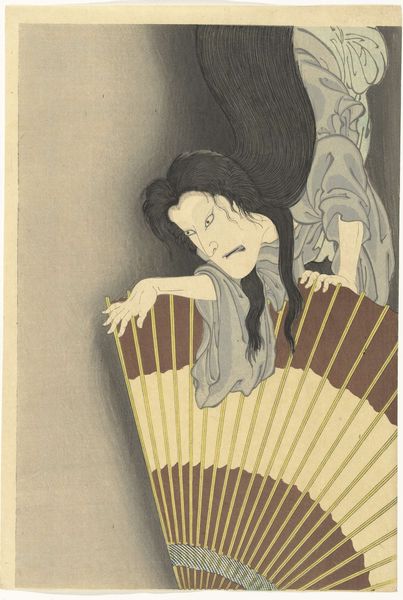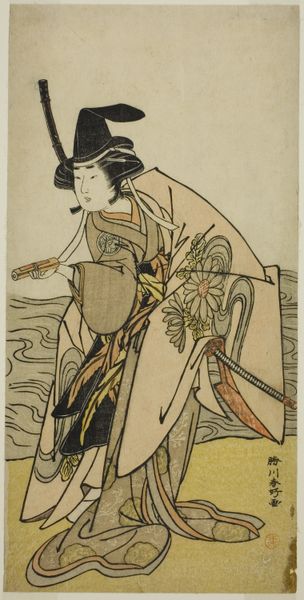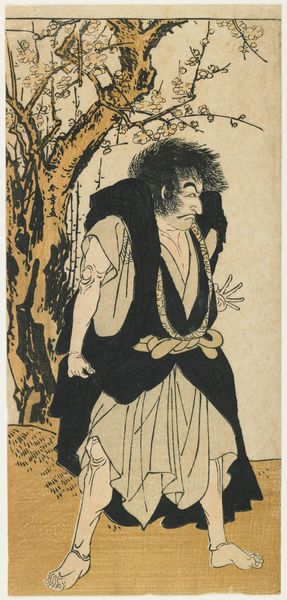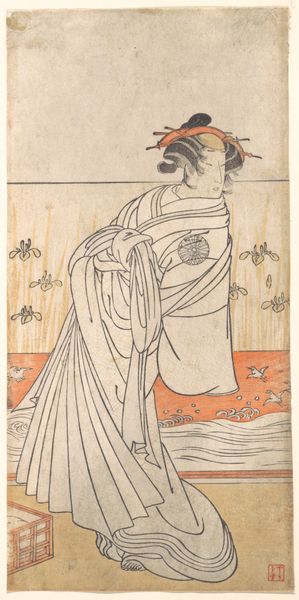
Applying Make-up with a Mirror at the Mansion of the Plates 1892
0:00
0:00
Dimensions: 41 3/4 × 9 7/8 in. (106.05 × 25.08 cm) (sheet, vertical ōban, upright triptych)
Copyright: Public Domain
Curator: This woodblock print, "Applying Make-up with a Mirror at the Mansion of the Plates", comes to us from the artist Toyohara Kunichika in 1892. It's currently held at the Minneapolis Institute of Art. What’s your immediate reaction to this image? Editor: Well, it feels a little bit haunted, right? The colors are so subdued, almost ghostly, and the figures seem to be emerging from… somewhere between the world we know and some other place. It has a stillness, a melancholy almost, but also a strange vibrancy in the detail. Curator: That melancholy might stem from the kabuki themes often represented in Kunichika’s prints. The "Mansion of the Plates" story, or Bancho Sarayashiki, is a classic ghost story in Japanese folklore. The woman applying make-up is Okiku, a wronged servant doomed to haunt the mansion after being falsely accused of losing precious plates. Editor: So, the elegant makeup routine isn't just a routine; it's like a repetitive, spectral act… trapped in a loop! Even the placement of the figures contributes; the way they stack vertically suggests layers of time and maybe regret. Also, is it me, or is that swirling shape at the top of the print representing a physical embodiment of her suffering? It seems oddly modern. Curator: That’s an astute observation! Kunichika masterfully incorporated ghostly and symbolic elements in a very innovative way. The almost graphic, linear quality of that shape may reflect artistic experimentation of the Meiji period. Okiku's image and associated motifs echo within Japanese popular culture to this day, serving as a constant reminder of injustice and the avenging power of wronged spirits. It certainly resonates across generations. Editor: It absolutely does. I appreciate that a seemingly serene image holds so much more under the surface—themes of revenge, despair, and cultural memory woven into a woodblock print. Definitely makes me want to know more about Japanese folklore and ghost stories. Curator: Exactly. The artwork acts as a bridge, then, inviting deeper investigations into our past. The enduring legacy and visual symbols tell stories about Japanese history that would have been immediately legible to those from its era. Editor: Indeed. So many fascinating layers here—a reminder of how deeply art can connect with both our personal feelings and our cultural past.
Comments
No comments
Be the first to comment and join the conversation on the ultimate creative platform.













